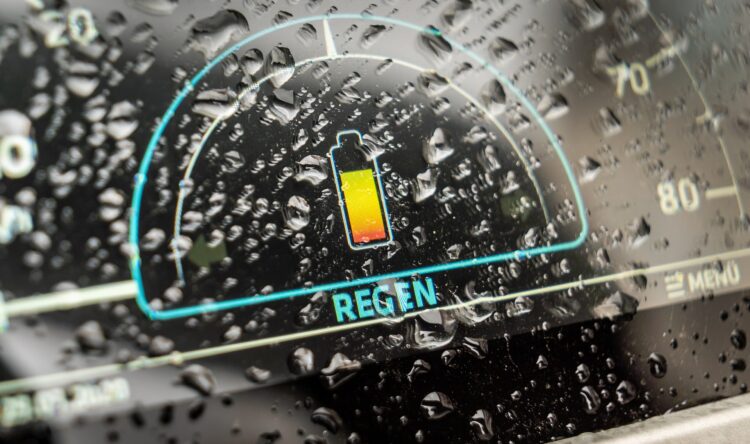The cost of cover
Insurance prices rise at record rates
A staggering increase in the average cost of car insurance places it as the third most expensive household bill.
Research of the latests data by confused.com that average annual bill to cover the car is now over £700.
Fast and the furious
Motorists are now paying £776 for their car insurance. It follows an average £119 (18%) increase in prices over the past 3 months. That’s according to the latest (Q2 2023) car insurance price index, powered by WTW.
Based on more than 6 million quotes over the quarter, the data reveals that prices are now £222, or 40%, more expensive than they were 12 months ago, on average.
This makes it the biggest price increase on record. And to put into context how quickly prices have increased, the average premium is 49% more expensive than 2 years ago.
Household costs
These increases mean that car insurance costs are close to the rates for council tax and energy, according to the research.
A survey of 2,000 UK drivers found that the average council tax bill is £984 per year, and £964 for energy. You can then add other expensive essentials, such as food and home entertainment.
The average UK driver is spending £1,022 on food shopping and £690 on home entertainment/broadband.
Shopping around
While this may look bleak to drivers, research also shows that there are savings to be made. Only 9% of UK drivers had a cheaper renewal price last quarter (April – June).
Regulations implemented by the Financial Conduct Authority in January 2021 appear to have made a more expensive renewal price for most. This goes against the main thrust of the changes.
The research shows that almost two in three (59%) saw their price increase, by £52, on average. This is despite almost a third (31%) having no driving convictions, and a further third (32%) having at least 1 year’s no-claims bonus on their policy.
However, many people have begun shopping around or better deals. Almost half (46%) have switched providers.
It’s a similar picture for those who saw a cheaper price, which averaged at just £34 less than the previous year. Two in 5 (40%) went on to buy with another provider.
This proves that drivers can still save money by shopping around as loyalty doesn’t pay when it comes to insurance.
Cost of living
One of the biggest expenses for insurers is claims. During the pandemic, fewer cars were on the road. As a result, the industry saw a reasonable drop in prices to reflect the reduction in claims being made. But now, research suggests normal driving habits have resumed. This could mean insurers are having to pay out for more claims than they were two years ago.
But the important fact here is that the cost of these claims has increased significantly for insurers. Like with many other businesses, this is arguably down to the shift in inflation rates reported over the past 18 months.
As a result, cost of repairs and maintenance have risen for the insurer. This is especially true for newer cars, and many used cars that are in high demand. In fact, the Association for British Insurers (ABI) reported a 33% uplift in the cost of vehicle repairs last quarter(2).
Used cars are holding their value more and this means that payouts for write-offs or total losses are costing insurers more to cover. Similarly, new cars and EVs are much higher in value than before due to more expensive features and upgrades coming as standard. This means paying out to replace a new car is costing insurers more.
Upward travel
While the average cost of car insurance in the UK has reached £776, there are some drivers that will be paying significantly more than this.
For example, the average premium for male drivers is now £827. This has increased by £236 (40%) in the last year, and £125 (18%) in the past 3 months. In comparison, female drivers are now paying £690, following a £198 (40%) increase year-on-year, and £107 (18%) over the quarter. This brings the average gap between them to £137.
Similarly, a driver’s location has a huge bearing on their price, with some now paying over £1,000 for their car insurance. A £299 (42%) increase in prices in Outer London has put the average premium in the region at £1,003 – the first time it has reached over £1,000 since the index began. However, Inner London remains the most expensive region in the UK, with the average driver now paying out £1,257.
National news
As expected, prices have risen across all UK regions, but some are still paying a considerable amount less than others. For example, the average insurance cost in the South West is only £509, despite a £136 (36%) increase over the year.
In most cases, prices are at their most expensive on record for each region, with the exception of Manchester and Merseyside. The average car insurance cost in the region is now £965, making it the most expensive region outside of London. However, this is still £48 (-5%) less than the highest price paid on record (Q4 2011).
A driver’s age also determines how much they pay. Younger drivers are bearing the brunt of the biggest car insurance costs.
Steep increases mean that drivers aged between 17 and 19 are paying out more than £2,000 for their policies, on average.
In particular, 18-year-olds are paying the most, with the average premium now £2,404. This is followed by 19-year-olds, who are paying £2,097, and 17-year-olds who are paying £2,088.
At the other end of the scale, drivers around retirement age benefit from the cheapest prices. In fact, for 69-year-olds, the average premium is just £413, in comparison. Drivers aged 61 and over all pay in the £400 bracket.
Sliding scales
While it may seem unjustified for some drivers to be paying out such hefty prices compared to others, this all comes down to the risk.
For example, male drivers typically have a higher risk profile than women, as they statistically drive more miles and more expensive cars. This puts them at an increased risk of a payout for insurers, as they have to account for the cost of covering a higher value car.(3).
Claims frequency is the biggest explanation for why drivers pay more. Cities are typically the more populated areas that see the biggest prices. It’s because these areas have more cars on the road, higher traffic levels and therefore a higher risk of accidents and claims.
And when it comes to age, younger drivers are less experienced and therefore at a higher risk of making a claim.
Just because car insurance prices are increasing, doesn’t mean that motorists have to pay more than they need to for their policies. Experts at Confused.com have identified some key ways for drivers to take a few pounds off their insurance price.
-
Be accurate with your mileage – Generally, the more miles you drive, the more likely you are to have an accident and make a claim. This means the higher your mileage, the more you pay for your car insurance. So, driving fewer miles can be a great way to save money on your car insurance policy. But don’t assume that a low mileage always means low prices. If you barely drive at all, your insurance company could see that as a risk as well.
-
Increase your voluntary excess – Increasing your voluntary excess can help you get cheaper car insurance, but you need to make sure you can afford to pay it, if you need to claim.
-
Pay for your car insurance annually – If you can afford it, paying for your insurance in one go rather than monthly is one way to get cheaper car insurance. That’s because insurance companies always charge interest for spreading the cost of your cover over the year.
-
Enhance your car security – The harder it is to steal your car, the less of a risk it is. This usually means cheaper car insurance.






